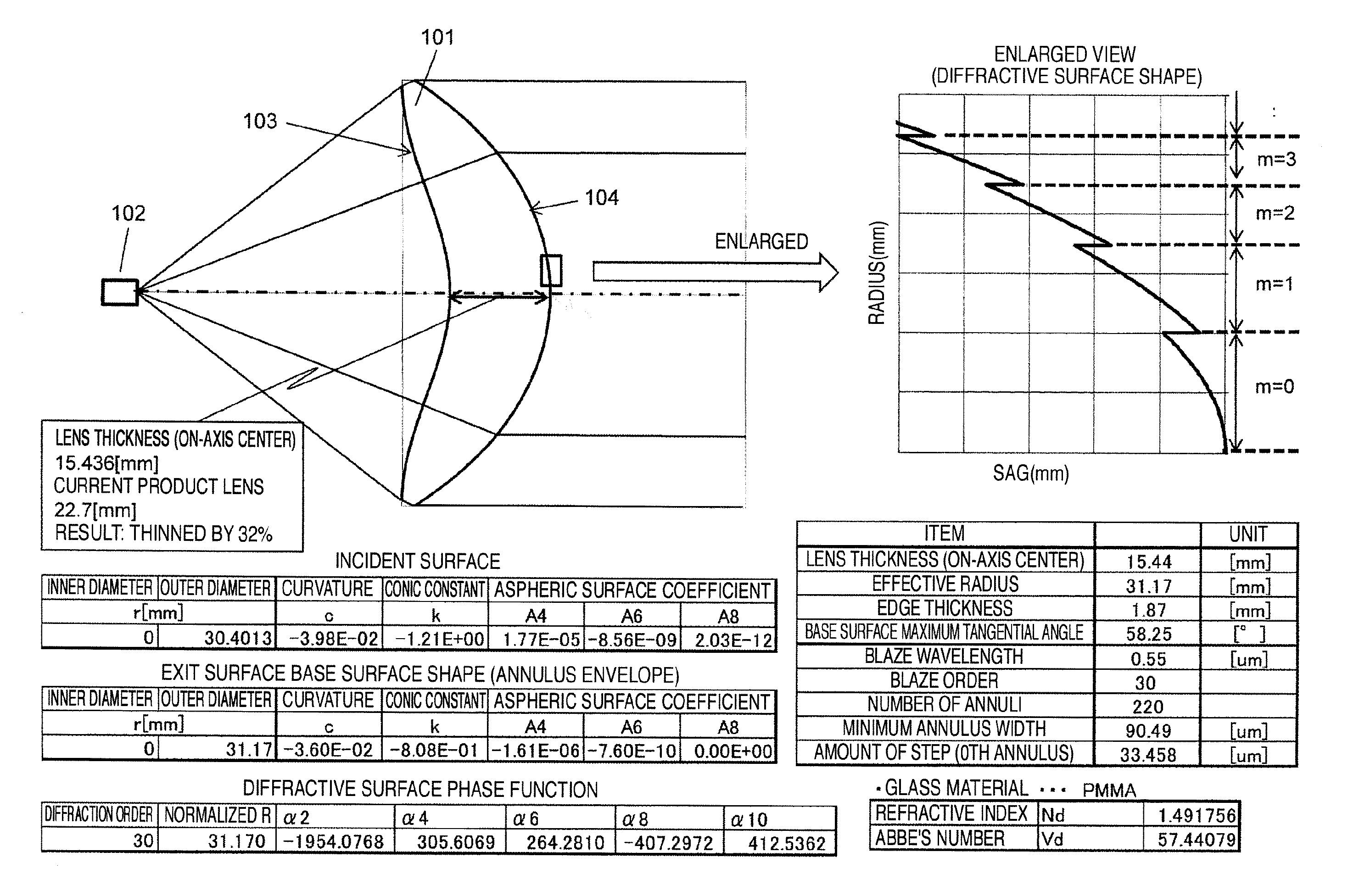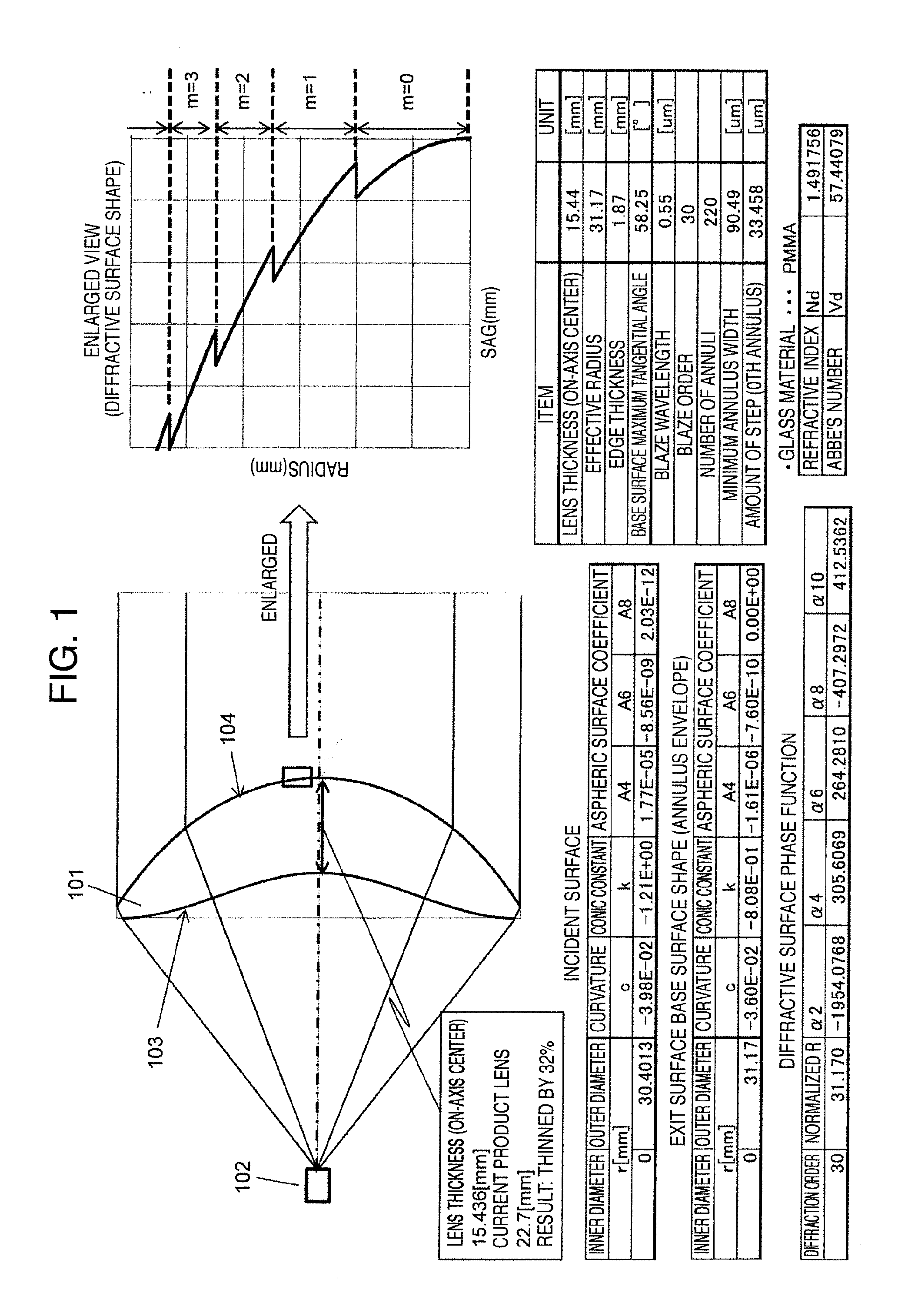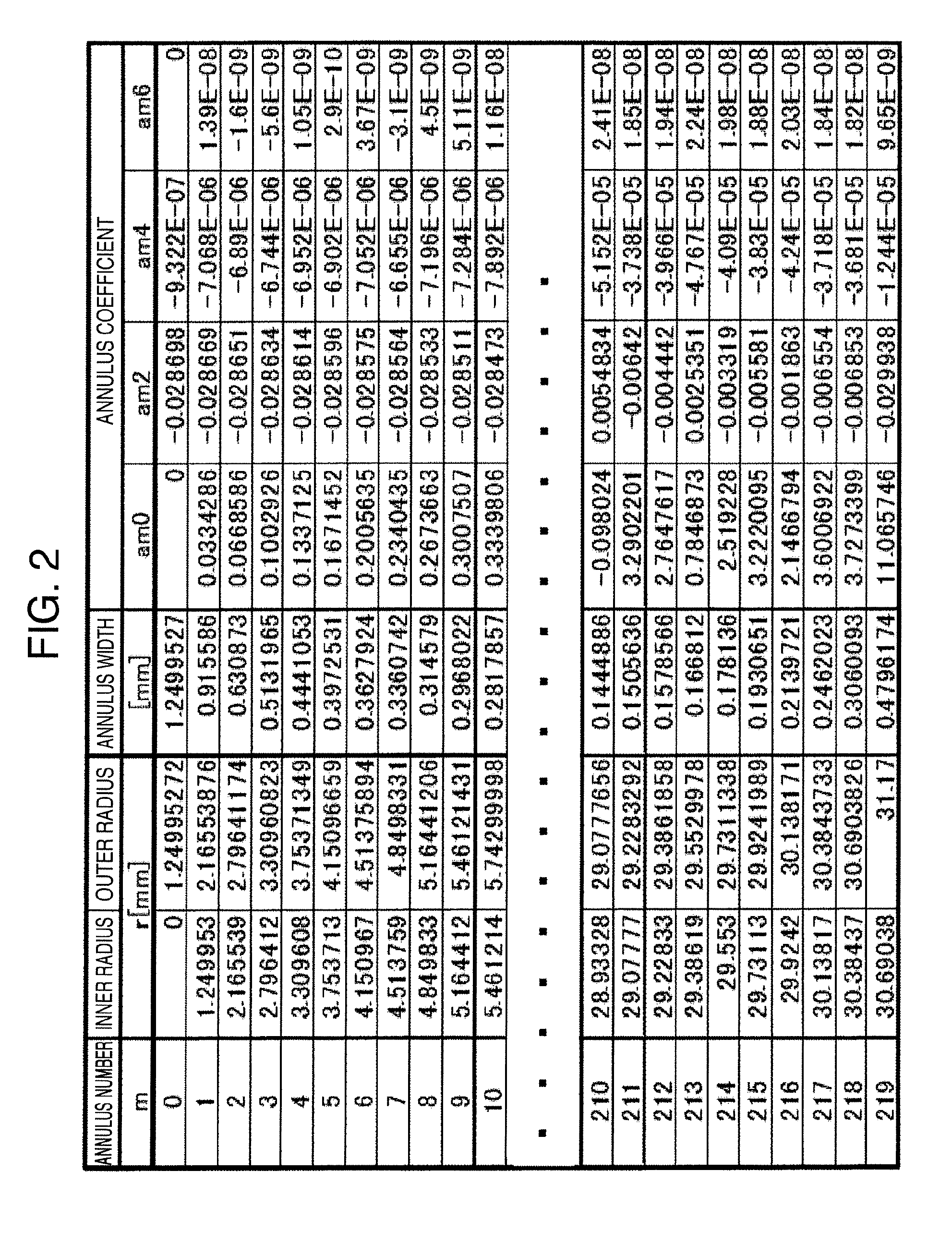Diffractive lens and optical device using the same
a technology of diffractive lenses and optical devices, applied in the direction of optics, diffraction gratings, instruments, etc., can solve the problems of reducing the pitch between the annuli and degrading machinability, preventing optical performance from being guaranteed, and the effect of reducing the thickness of a thick lens is not expected to be produced, so as to reduce the weight and size of optical devices, reduce the effect of diffraction efficiency and efficiency reduction
- Summary
- Abstract
- Description
- Claims
- Application Information
AI Technical Summary
Benefits of technology
Problems solved by technology
Method used
Image
Examples
embodiment 1
[0042]In the present embodiment, a lens for a lighting optical system will be described which collimates light from a light source and which is assumed to be, for example, a headlamp in an automobile.
[0043]FIG. 1 is a diagram showing an example of the results of design of a diffractive lens in the present embodiment. A diffractive lens 101 is a lens that converts divergence light from a light source 102 into parallel light. A wedge shape is a meniscus lens with an incident surface 103 that is a concave surface and an exit surface 104 that is a convex surface. The lens is a diffractive lens designed to have functions equivalent to the functions of a normal lens shown in FIG. 3 with a focal distance of 57 mm and a diameter of 62 mm. On the exit surface 104, a diffractive lens shape is formed which is provided with axially symmetric annulus areas defined by steps as shown in an enlarged view of a surface shape of a central portion in FIG. 1. A diffraction order is 30th, the number of a...
embodiment 2
[0056]The present embodiment is an embodiment of a lens used for an optical system in a liquid crystal projector which irradiates a liquid crystal modulation element with output light from a LED.
[0057]FIG. 8 is a diagram showing an example of a normal lens that is a model for the present embodiment. This optical system irradiates a diffusion plate surface 804 with light from a monochromatic LED light source 801 via a first lens 802 and a second lens 803. The thicker first lens 802 is replaced with the diffractive lens of the present application by being thinned. A lens material is PMMA, and a lens shape and an on-axis lens thickness are as shown in FIG. 8. A surface shape is described in accordance with an asphericity expression illustrated in Expression 1. These values indicate the first lens has a focal distance of 4.3 mm. FIG. 8 shows one-color LED optical system for simplification. However, in actual use, a wavelength synthesis prism is used between a lens 803 and a diffusion su...
PUM
 Login to View More
Login to View More Abstract
Description
Claims
Application Information
 Login to View More
Login to View More - R&D
- Intellectual Property
- Life Sciences
- Materials
- Tech Scout
- Unparalleled Data Quality
- Higher Quality Content
- 60% Fewer Hallucinations
Browse by: Latest US Patents, China's latest patents, Technical Efficacy Thesaurus, Application Domain, Technology Topic, Popular Technical Reports.
© 2025 PatSnap. All rights reserved.Legal|Privacy policy|Modern Slavery Act Transparency Statement|Sitemap|About US| Contact US: help@patsnap.com



